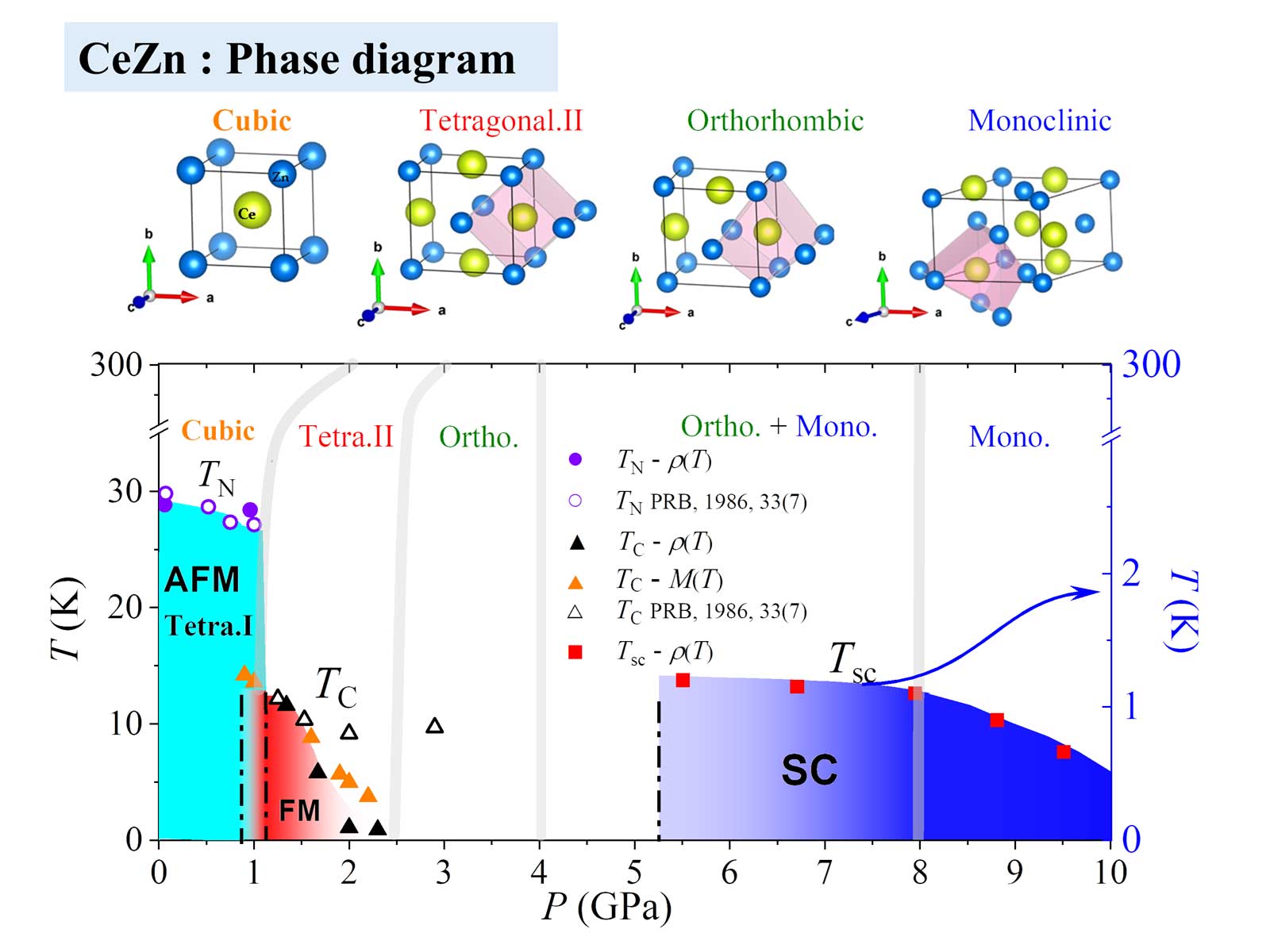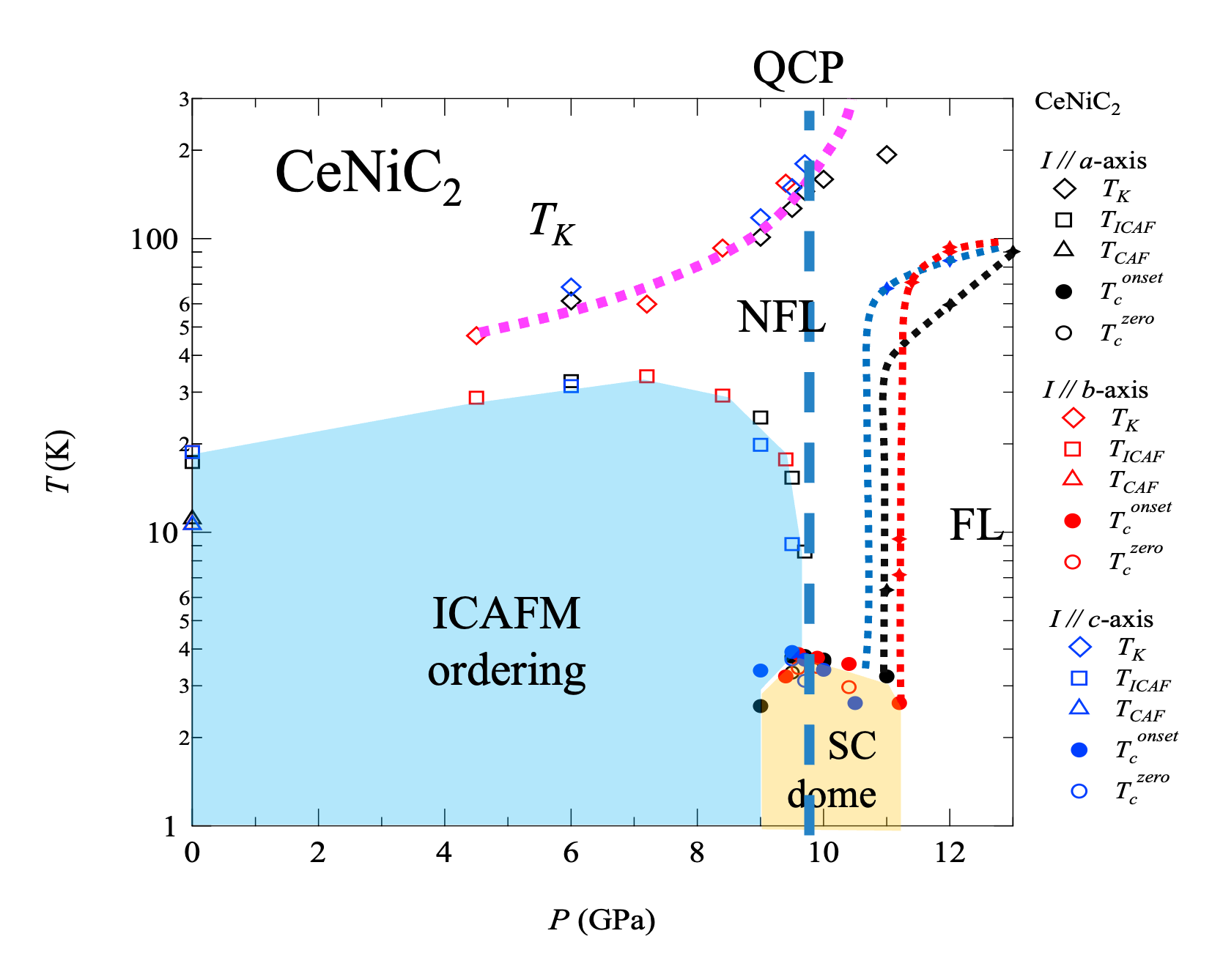Uwatoko Group
Research Subjects
- Search for novel physical phenomena under high-pressure
- Study of the pressure-induced quantum phase transition
- Development of high-pressure apparatus and establishment of physical property measurement techniques under the multi extreme conditions
The high-pressure group has been studying various materials under high-pressure conditions in combination with low temperature and/or high magnetic field. Combination of such multiple extreme conditions is becoming popular and indispensable for research in solid state physics. However, the developments of techniques that can realize in-situ measurements under multiple extreme conditions are often challenging and require sophisticated considerations. This group has persistently devoted numerous efforts in developing such advanced high-pressure techniques and in turn have become successful studying the strongly correlated electronic systems, which is one of the most important themes in modern condensed matter physics research. Since many mysterious phenomena in strongly correlated electronic systems results from a delicate interplay of multiple energy scales involving electron-phonon, electron-electron interactions as well as orbital degrees of freedom, we foresee the discovery of many unknown exotic phenomena under multi-extreme conditions. Besides, high pressure offers an effective knob in tuning the inter-atomic distances and the density of electronic states at the Fermi level, which are crucial for controlling the complex interactions present in correlated materials in a much cleaner way.



